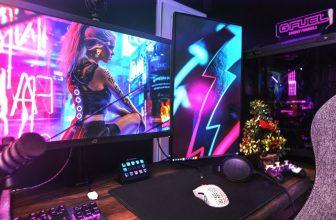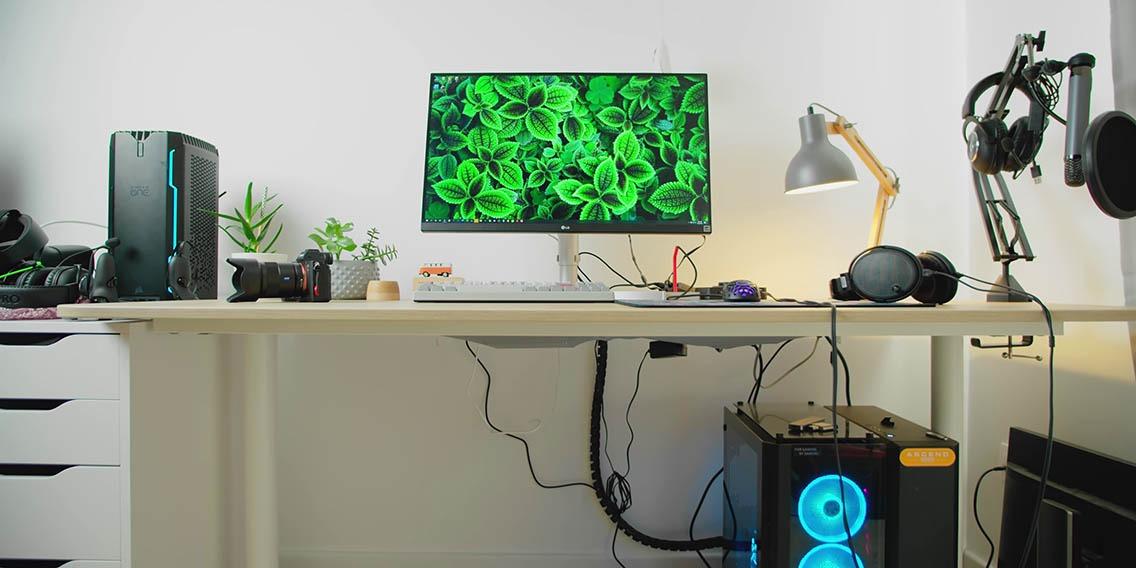
Anyone who works from home eventually wonders about organizing cords under desk. Your home office desk can quickly become overrun with dangling cords. In this article, FittingChairs will show you a cord management.
How To Organize Cords Under Desk – Overview
When it comes to organizing cords under desk, everyone has different needs and goals. Indeed, everyone has their own approach to things.
The goal of cable management is straightforward is keeping your cords hidden.
Hiding your cords instantly improves the appearance of your desk and your entire home office. However, how you conceal your cables is entirely up to you.
Fortunately, controlling your cords is not difficult. You can take control of your unruly cords and transform your home office and desk space into something clean, neat, and organized with just a little time and effort and the right tools.
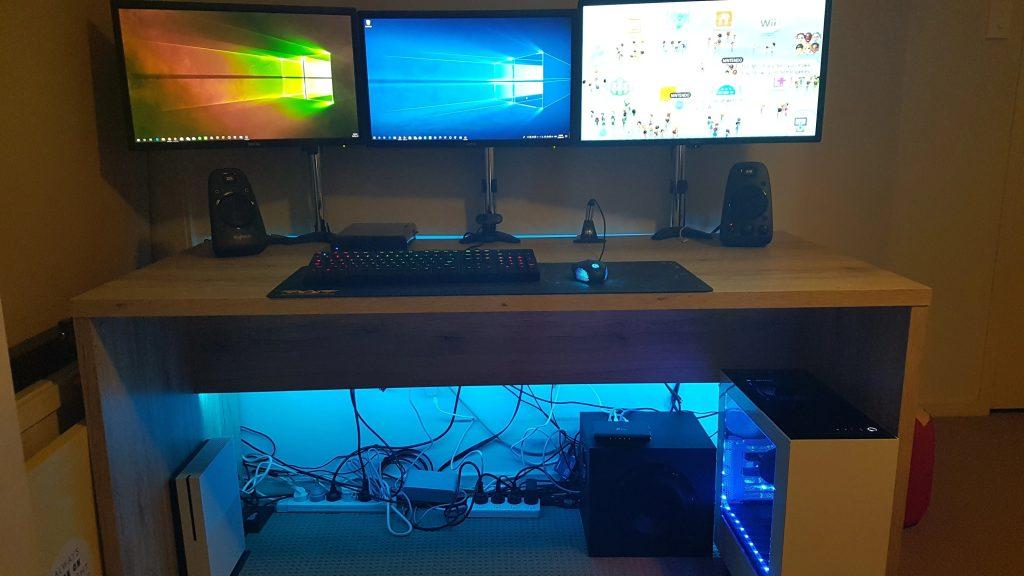
There are numerous cable management products on the market, ranging from cord boxes to cord sleeves.
Even so, you are not required to spend any money. Everything you need is common household items such as twist ties and masking tape.
Here are steps on organizing cords under desk:
- Step 1. Unplug everything from the wall and power strips To begin organizing cords under desk
- Step 2. Clearly label your cords so you can find them when you plug them back in
- Step 3. Install your power strip and conceal your cords by wrapping them in cable ties
- Step 4. Reconnect your cords to the power strip
If you’re looking for a simple, efficient, and effective way to organize your cords and cables, this is the method that works like a charm.
Unplug All Cords from Your Home Office Desk
It’s the first step on how to organize cords under desk. You simply cannot manage your cords if they are all plugged in, so turn off all of your electronics and begin unplugging everything.
If your modem and router are part of your home office setup and must be unplugged, notify everyone that the internet will be unavailable while you work on your cord organization project.
Untangle and separate any cords that are wrapped together after you have unplugged all of the cords from around your desk.
Your cords will definitely be tangled if you haven’t had proper cord management up to this point.

Proper Cord Management Means Labeling Your Cords
Label all of your cords while they are unplugged to avoid future headaches. This will assist you in determining which cord is which once everything is plugged back in.
Most cords look the same. You don’t have to guess which cord to unplug and inadvertently unplug the wrong one when you use labels. You have several options for labeling your cords.
Wrap a piece of masking tape about an inch and a half to two inches long around each cord. Then, bring the two ends of the tape together on each side to form a flag.
Put the item’s name on the flag and you’ll never have to guess again.
Also, you can buy special color-coded cord labels or plastic cord identifiers. These wrap around your cords personally are written with the cord name on each label or by using the supplied icons.
Keep Your Home Office Cables & Cords Together
If you are in trouble with cable or cords organizing is that your cords are constantly disorganized, you can’t cross your legs beneath your desk without kicking cords.

Other cases, if you have a small baby or a pet, the dangling cords may be too tempting to resist. This inquisitiveness could quickly lead to disaster.
Fortunately, there are numerous methods for keeping your cords in their proper place. Among the options are:
- Wrapping your cords together to make them shorter
- Using a cord management tray or box to feed them
- Using cord clips or wall channels to secure them
Any of these methods will relieve you of the constant annoyance of unmanaged cables every time you sit at your desk.
Not only that, they will protect your cords from damage and your family from harm.
Tightly Wrap Items for Cord Management
Now that your cords are successfully labeled, it’s time to bunch them up and wrap them for organizing cords under desk. You will wrap them together so that they’re organized and out of the way.
However, you’ll need to shorten your cords before you wrap them up, otherwiseinstead of multiple separate long annoying cords.
There are a few ways you can shorten your cords:
- Use the loop method
- Use the wrap
- Coil your cords into a circle
Leave enough length free on each end so you can plug your cords back into the backs of your electronics as well as into the outlets
Beyond that, you can use cable ties or household ties to keep your cords bunched nicely.
Similarly to the color-coded cord labels above, you can find colorful velcro to wrap your cords and make your home office a little brighter.
Use a Cord Management Tray
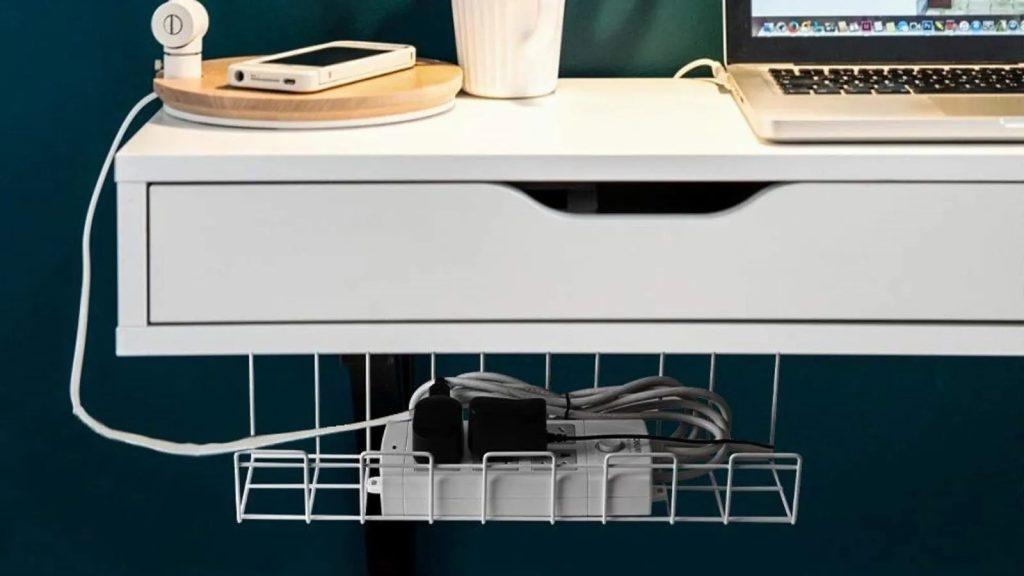
A cord management tray will fit under your desk and stores your cords and power strip. This keeps them from dangling and getting tangled up.
Generally, the tray guides the cords to their intended location, preventing them from becoming tangled beneath your desk.
Instead of wrapping your cords neatly and evenly, use an under-the-desk cord management tray. You can also simply feed any stray cords through the tray and into their appropriate outlets.
In fact, combine the two methods for maximum organization by wrapping the cords and then feeding the bundle through the tray.
Cord management trays will be useful if you have a desk that can be adjusted. For example, if you convert your desk to a standing desk, your cord management tray will rise with it to keep your cords organized.
Use a Cord Management Box
It’s common to have charging cables laying all over your desk. Generally, a cord management box, as opposed to a cord management tray, sits directly on top of your desk.
It works similarly to the tray in that it keeps all of your items neatly contained. So, you can hide your cords in a cord management box and never see them again.
On the other hand, a large cord management box is a great solution if you have several devices to plug in or if your cords are thick, as it can hold a jumbo power strip as well as your thicker cords like CPU power cord.
If you have a lot of charging cords to plug in, smaller cord management boxes are ideal.
Use Cord Management Organizer Clips
Cord organizer clips are malleable rubber buttons that secure your cords. These adhesive clips can be attached to the top of your desk, the back of your desk, or the wall behind your desk.
They will keep your cords straight and even, preventing cords and cables from hanging loosely from your electronics on your desk.
Use a Cord Management Channel or Sleeve
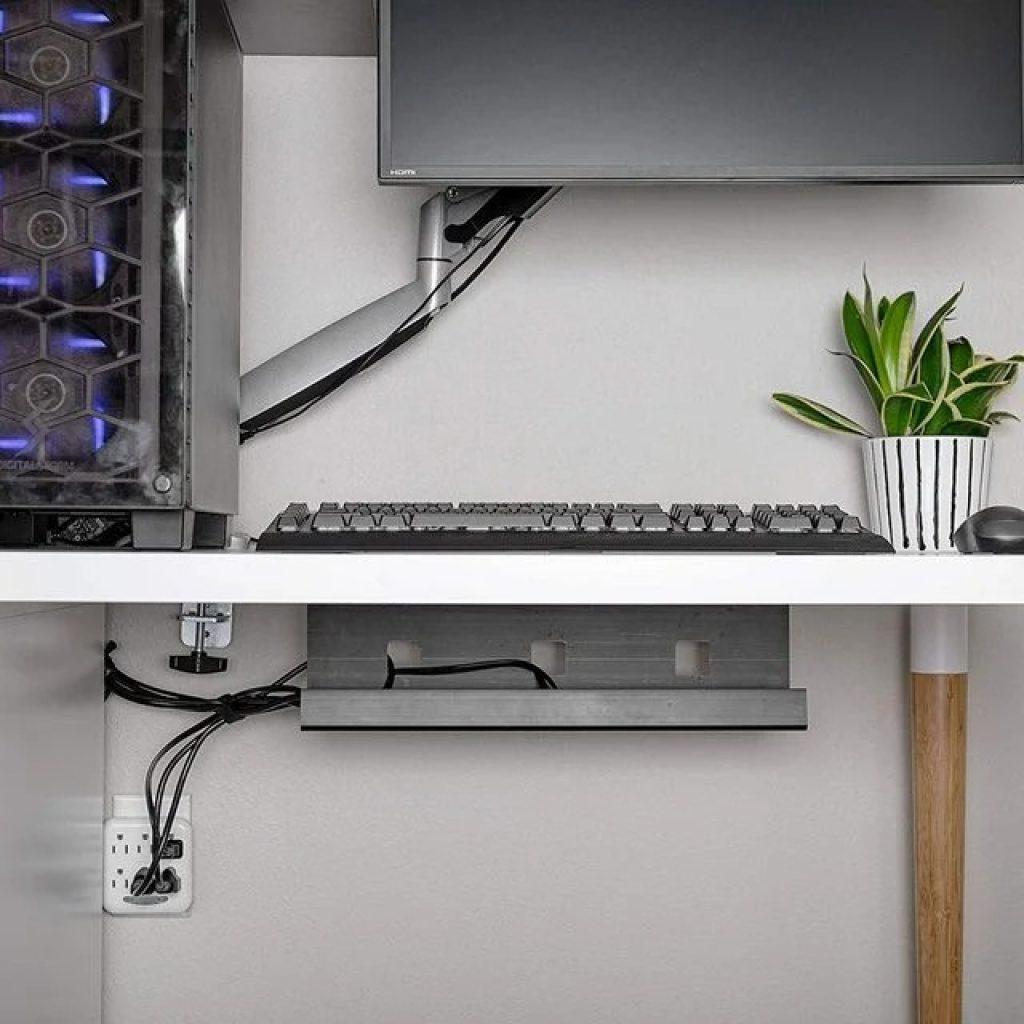
Cord channels are popular not only for home offices, but also for home theaters with multiple TVs, Blu-ray players, and soundbars.
They are tunnels that allow your cords to travel unnoticed. Cord channels are solid and can be attached to a wall or the floor, whereas cord sleeves are soft and can be attached to the back of your desk.
Simply feed your cords into the top of the cord channel or sleeve, and they will emerge from the bottom, ready to be plugged into your power strip. You also see your cords.
Use a Desktop Cord Management Organizer
Attach a cord organizer strip to the top of your desk and put it behind your desktop or tower, where it will be accessible but not in the way.
Get cord organizers are similar to cable clips sit on top of your desk. Whereby, organizing cords under desk is simply sliding into designated slots and remain in place.
Mount Your Power Strip to Your Home Office Desk
The shorter your cords can be, the closer your power strip is to your desk. So, mount your power strip to maximize cord management.
It is entirely depend on how you mount your power strip. Simply use a high-quality power strip for power all of your items while also protecting them from power surges.
Mount the power strip in a variety of ways below:
- Mount the power strip to the back of desk
- Mount the power strip to the underside desk
- Mount the power strip to the wall behind desk
Consider your spatial constraints when mounting the power strip to the back of your desk or to the wall behind your desk. Keep in mind that your desk must be spaced sufficiently away from the wall for the cords to plug into the power strip.
Many power strips come with mounting holes on the back. If you prefer to mount with screws, you can do with paying attention to where the holes align when mounting with screws.
You don’t want to drill holes into the wall or your desk only to find out that the holes don’t line up. Furthermore, if the surface of your desk is very thin, use screws that are short and will not punch out the back.
If you don’t want to drill holes in your desk or wall, you can use double-sided adhesive to mount your power strip.
Plug Everything Back into the Home Office Power Strip
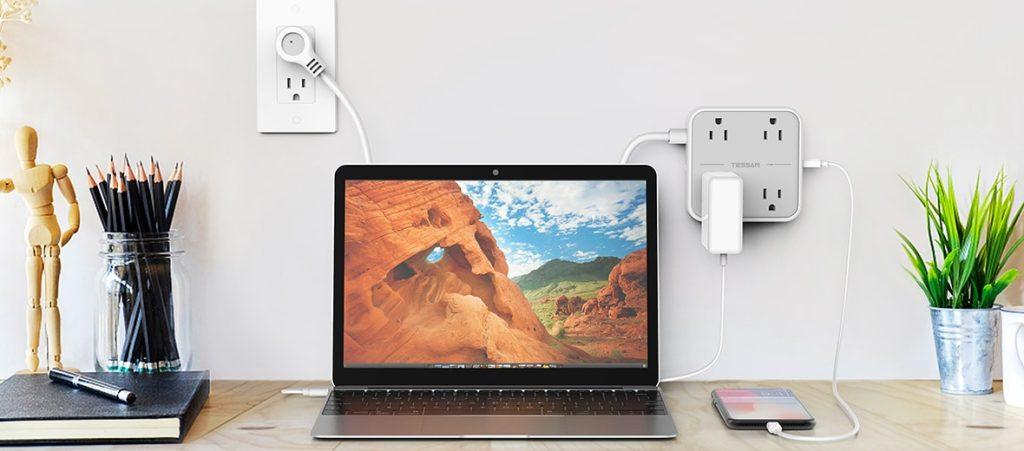
Once you’ve determined the best cord organization method for your needs, it’s time to reconnect. Note that keeping enough slack in each cord to plug it into the now-mounted power strip.
If your desk is a jumble of untethered cables, don’t ignore to apply these steps from FittingChairs on organizing cords under desk to keep everything neatly.




